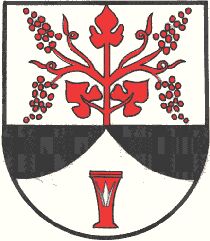Bad Gams: Difference between revisions
Knorrepoes (talk | contribs) m (Text replace - "'''Origin/meaning :'''<br>" to "====Origin/meaning====") |
Knorrepoes (talk | contribs) m (Text replace - "|width="15%"|50 px|right |}" to "|width="15%"|50 px|right |}<seo title="Wappen, Gemeindewappen" />") |
||
| Line 3: | Line 3: | ||
|width="70%" align="center" |'''Heraldry of the World<br>Civic heraldry of [[Austria]] - [[Austria|Österreichische Gemeindewappen]]''' | |width="70%" align="center" |'''Heraldry of the World<br>Civic heraldry of [[Austria]] - [[Austria|Österreichische Gemeindewappen]]''' | ||
|width="15%"|[[File:Austria.jpg|50 px|right]] | |width="15%"|[[File:Austria.jpg|50 px|right]] | ||
|} | |}<seo title="Wappen, Gemeindewappen" /> | ||
'''BAD GAMS''' | '''BAD GAMS''' | ||
Revision as of 12:30, 7 November 2012
| Heraldry of the World Civic heraldry of Austria - Österreichische Gemeindewappen |
BAD GAMS
State : Steiermark
District : Deutschlandsberg
Origin/meaning
The arms were granted on September 19, 1977.
The municipality has changed its name some time ago from Gams ob Frauental to Bad Gams. Local waters have been used for curative purposes for a long time. Thus, the cup was put in the arms. The name of the municipality, Gams, does not, in fact, derive from the dialect "Gams" (Gemse, chamois), but means "stone". That stone, a sort of gneiss, was quite important, economically. It is represented by the black bar, pierced by the white point, representing the springs. The vine indicates a long, long tradition of viniculture; the traditional vine in this region is the Wildbacher Rebe, which yields the Schilcher, a very typical Styrian drink.
Literature : Image provided by Karl Palfrader (k.palfrader@aon.at), MStLA 28 (1978), p. 28

